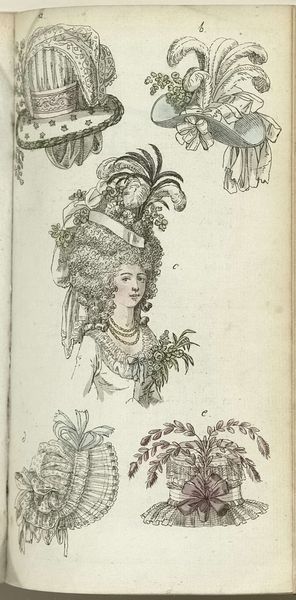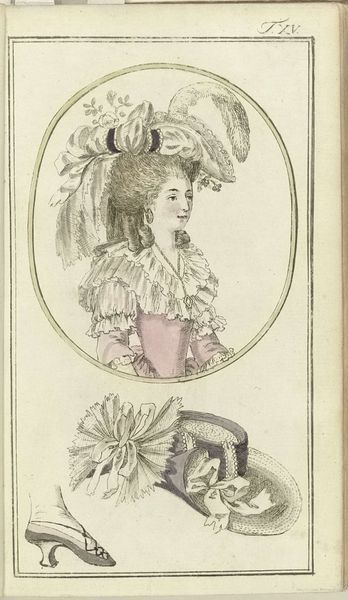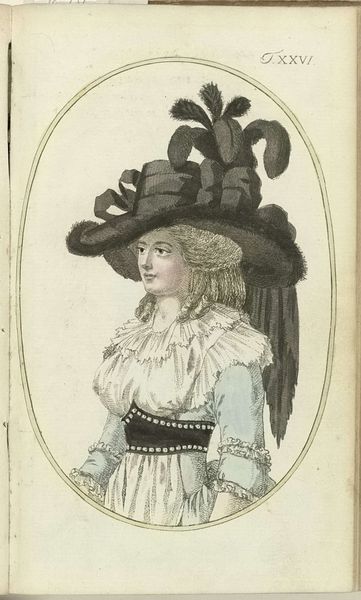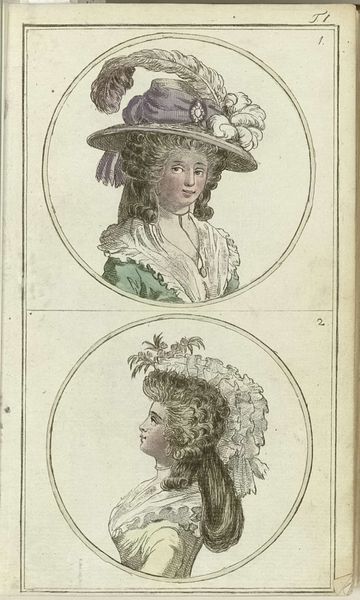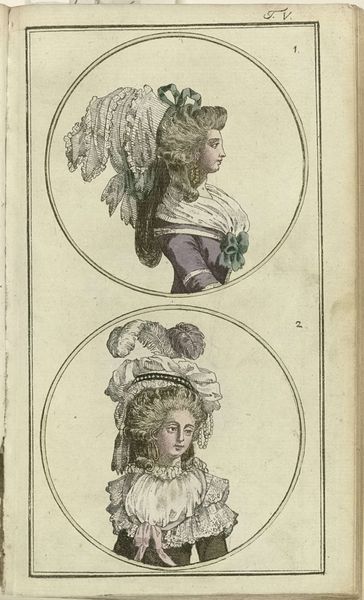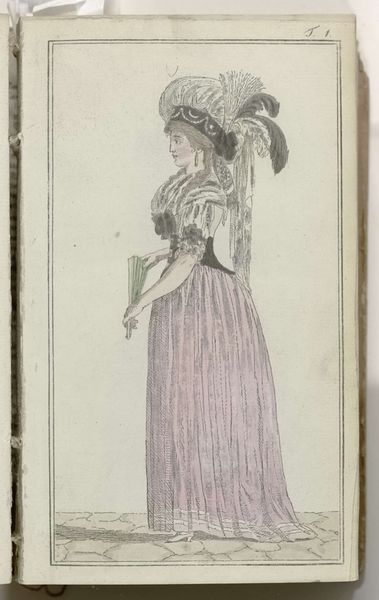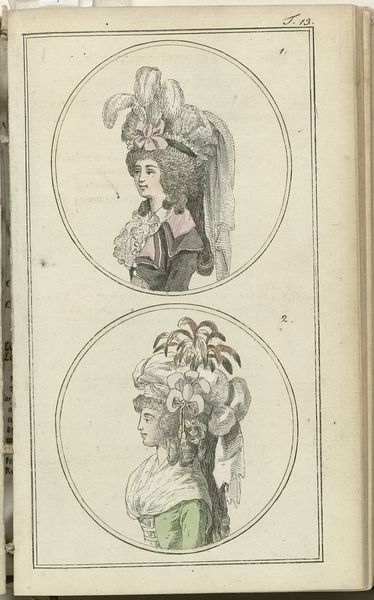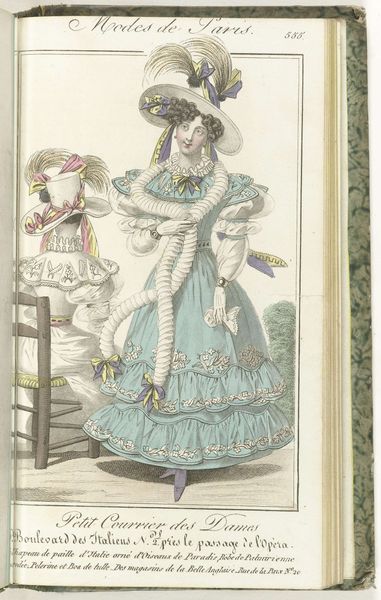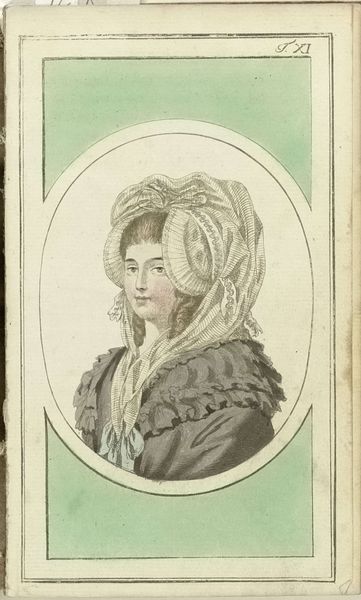
print, etching
#
portrait
# print
#
etching
#
line
#
genre-painting
#
history-painting
Copyright: Rijks Museum: Open Domain
Curator: Oh, the feathers! My first impression? It's all just a glorious, over-the-top explosion of texture and powdered confidence. Editor: This etching is from an issue of "Journal des Luxus und der Moden" dating to 1786, a publication by Friedrich Justin Bertuch. It presents a stylish lady. The medium combines printmaking techniques with an early form of fashion journalism. Curator: Fashion journalism, how delicious! But you know, beneath the gorgeous excess, there's a definite, almost satirical sharpness to the line work. Editor: Absolutely. The fashion press of the period often served as a space to negotiate complex ideas about gender, class, and national identity. Consider, for instance, the extravagance on display, like that powdered wig… It spoke volumes about social hierarchy. Curator: Hierarchy certainly, but it’s also sheer, playful artistry! Just imagine the artistry—or perhaps absurdity—required to keep that towering confection in place all day! Editor: Well, extravagance wasn’t just visual; it was economic and political. These displays of wealth occurred against a backdrop of growing economic disparity in pre-Revolutionary France. Curator: Of course! Those societal tensions seethed beneath the surface, even within such images of frivolous opulence. The looming Revolution always makes appreciating images of the ancien regime so difficult. I wish there was some way to see it just at face value. Editor: I can see that, but considering historical circumstances often helps reveal underlying commentary, if not critique. These types of publications inadvertently show just how deeply material culture can embody societal struggles and power dynamics. It reflects history and its politics more broadly, wouldn't you agree? Curator: Yes. These fashion plates were definitely a coded language—and one that whispered about things far weightier than ribbon or lace. So much emotion bottled up under the lace and perfume. Editor: Ultimately, examining historical artwork involves navigating that space between aesthetics and analysis, engaging with what the art conveys on the surface, and understanding the deeper socio-political undercurrents that shaped it. It all works as a cultural history lesson. Curator: It's been enlightening to consider the many layers behind a seemingly light-hearted image!
Comments
No comments
Be the first to comment and join the conversation on the ultimate creative platform.
